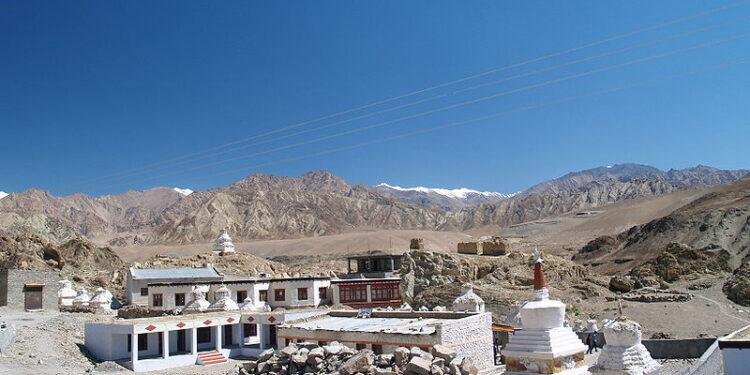Alchi Monastery or Alchi Gompa is a Buddhist monastery, known more as a monastic complex of temples in Alchi village in the Leh District, of the Indian state under the Ladakh Autonomous Hill Development Council of Jammu and Kashmir. The complex comprises four separate settlements in the Alchi village in the lower Ladakh region with monuments dated to different periods. Of these four hamlets, Alchi monastery is said to be the oldest and most famous. It is administered by the Likir Monastery.
Shrine’s History
The history of the monuments in the Alchi complex and in the other two villages in the Alchi group is not precise, in spite of many inscriptions and texts displayed on the wallsTraditionally, the creation of the Alchi complex is attributed to the famous scholar-translator Rinchen Zangpo (958?1055) in the 10th century, along with the Lamayuru Monastery, the Wanla, the Mang-gyu and the Sumda. During the tenth century, the Tibetan King Yeshe Od of Guge, in order to spread Buddhism in the Trans Himalayan region, took the initiative by allocating 21 scholars to the region. However, due to harsh climatic and topographic conditions, only two survived one of them the esteemed scholar and translator Rinchen Zangpo who established Buddhist activity in the Ladakh region and other areas of India including Himachal Pradesh and Sikkim.
During his sojourn there, he also went to the neighbouring countries of Nepal, Bhutan and Tibet. Zangpo became known by the epithet Lohtsawa? or the Great Translator?; he is credited with building 108 monasteries in the trans-Himalayan region in his quest to disseminate Buddhism. He institutionalised Buddhism in the region; these monasteries are considered the mainstay of Vajrayana of Tibetan Buddhism (also known as Lamaism). Zangpo engaged Kashmiri artists to create wall paintings and sculptures in the legendary 108 monasteries; only a few of these have survived, with the Alchi Monastery complex in Ladakh having pride of place among all monasteries that he built. Since the monasteries of this period did not belong to any of the established Tibetan schools, they were initially brought under the control of the Kadampa order. When the condition of the monasteries deteriorated, they were mostly taken over by the Gelukpa order, with the exception of Lamayuru which was placed under the Drigunkpa sect. After worship at Alchi monastery ceased for some reason in the fifteenth century, it also became under the Gelugpa sect controlled from Likir

Architectural Relevance of This Shrine
The monastery complex has three major shrines: the Dukhang, the Sumtseg and the Temple of Manjushri, all dating from between the early 12th and early 13th centuries. Chortens are also an important part of the complex. In addition, the Alchi complex has two other important temples, the Translator’s Temple called the ‘Lotsabha Lakhang’ and a new temple called the ‘Lakhang Soma’.This collection of four small shrines in the Alchi village has been described by The Hindu: as a jewel of colours and forms that are so utterly beautiful that the normal state of breathlessness in this high altitude becomes a deep gasp.
The artistic and spiritual details of both Buddhism and the Hindu kings of that time in Kashmir are reflected in the wall paintings in the monastery complex. These are some of the oldest surviving paintings in Ladakh. The complex also has huge statues of the Buddha and “lavish wood carvings and artwork ? almost baroque in style.”Shakti Maira vividly explains the beauty of this small monastery as “stylistically rendered in an eclectic mix of Tibetan and Kashmiri faces and clothes.
By Road
The nearest Bus stop is Alchi.
By Rail
The railway stations at Dehra Doon and Chandigarh.
By Air
The nearest airport is Leh Kushok Bakula Rinpoche Airport.






































